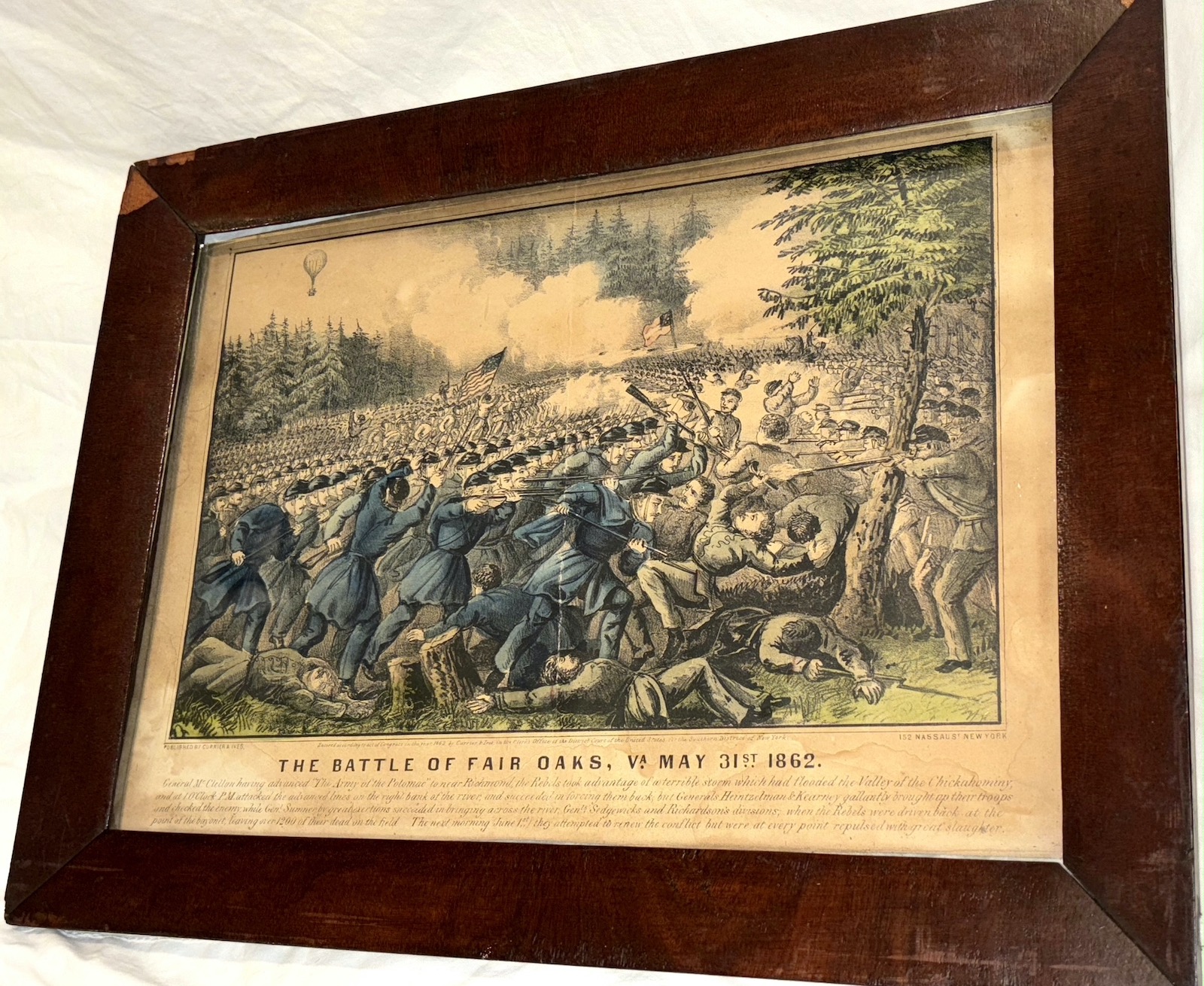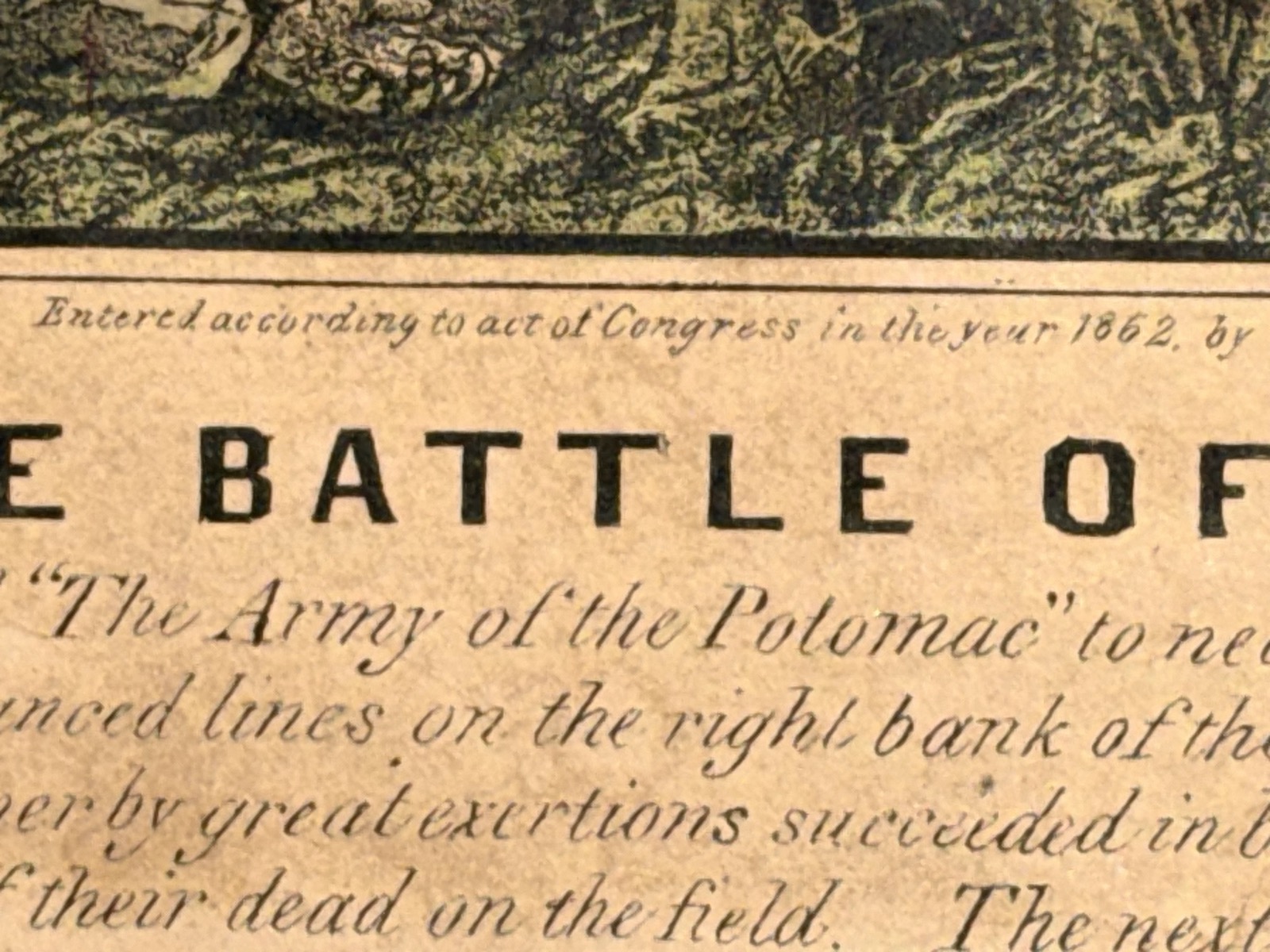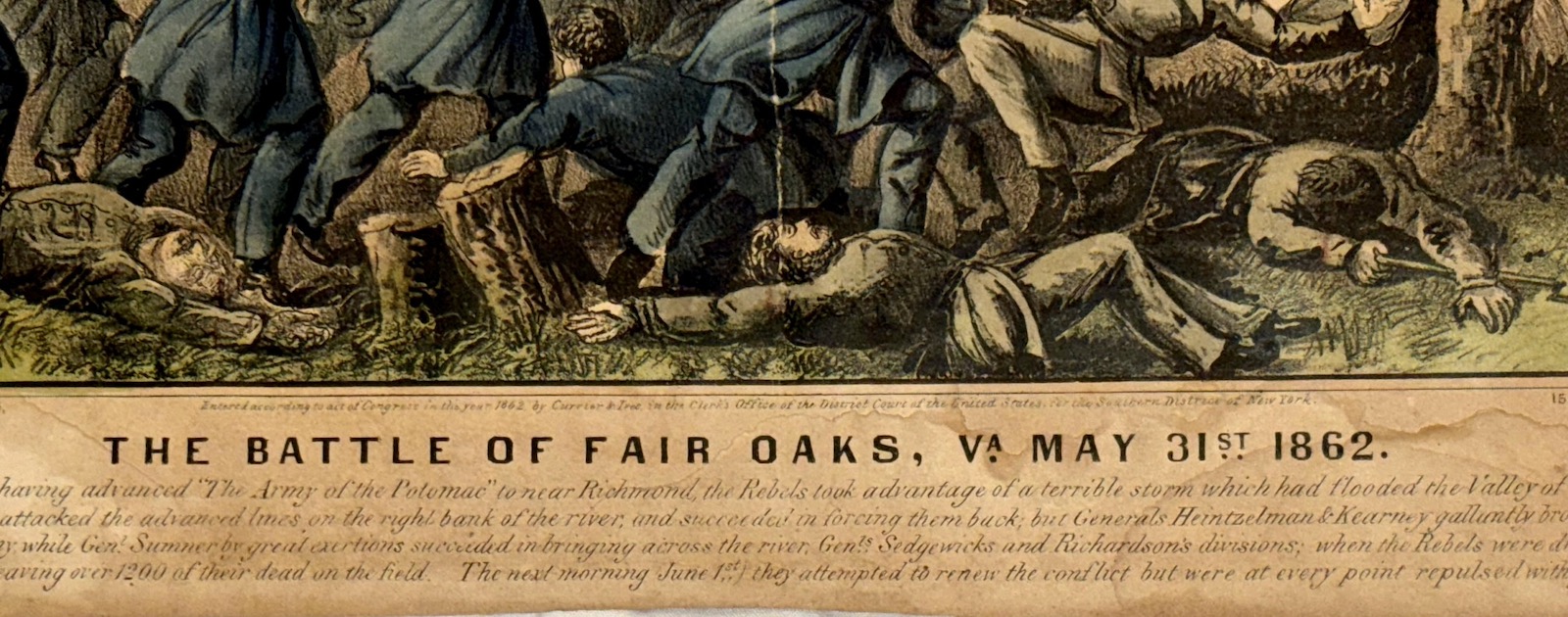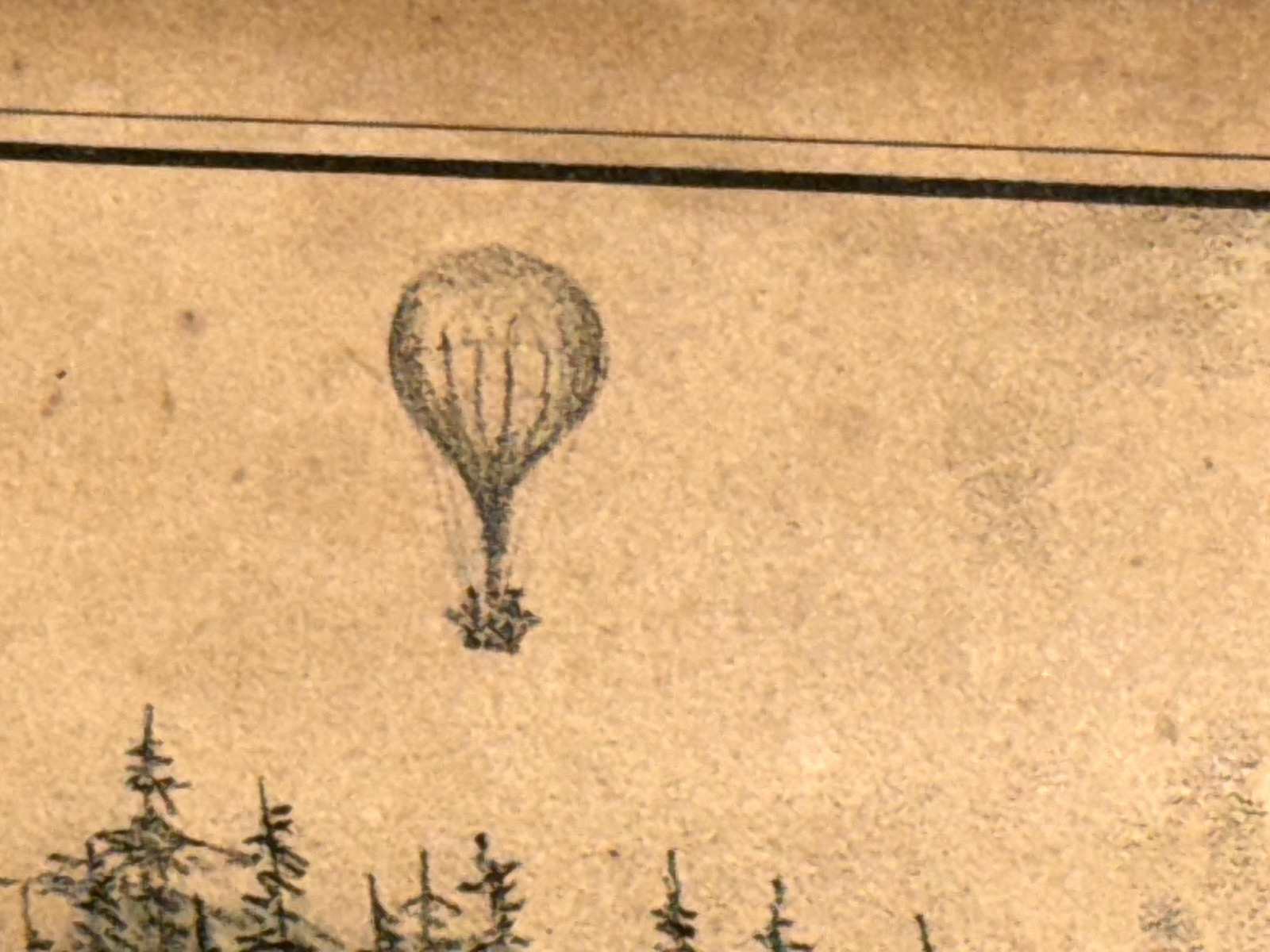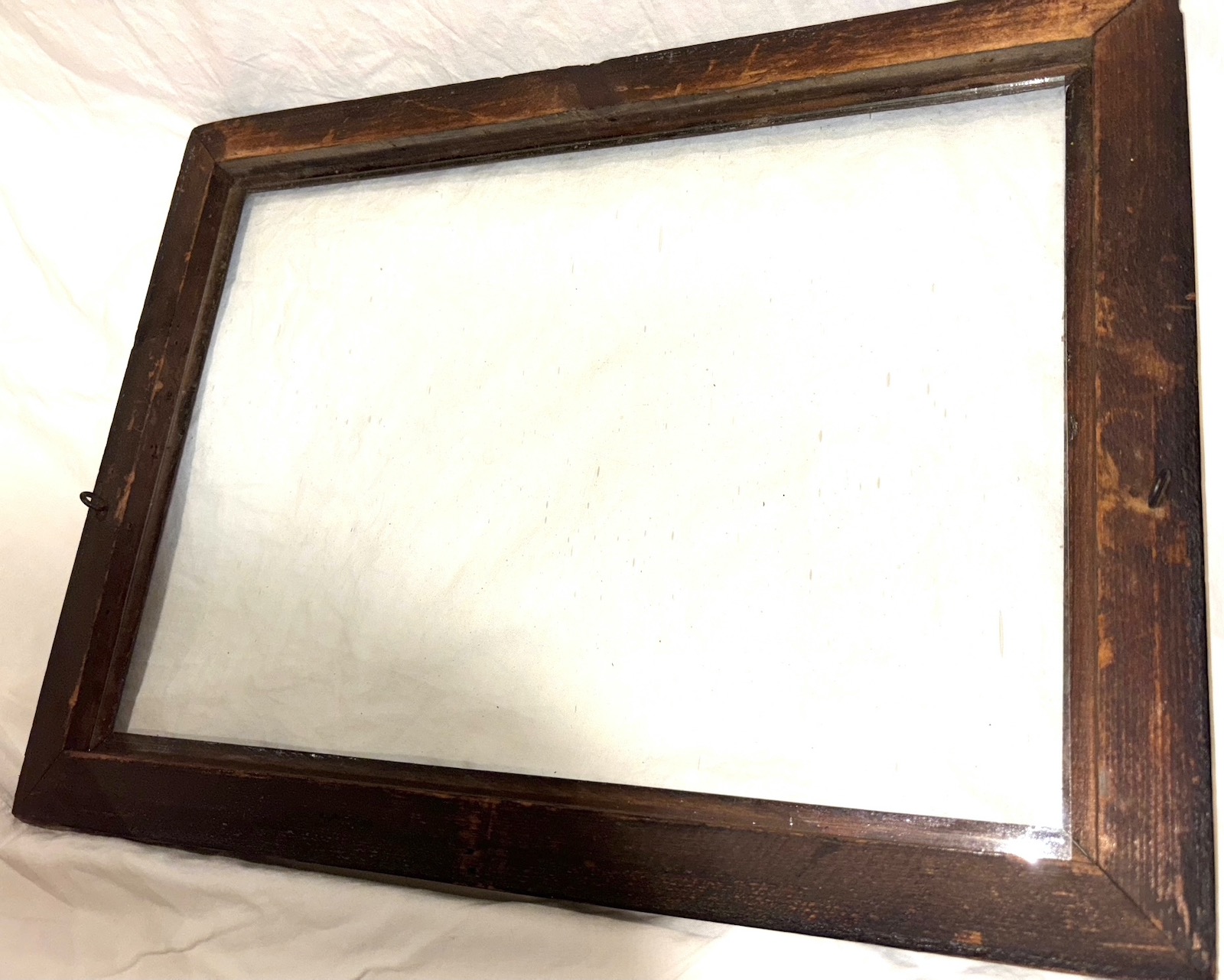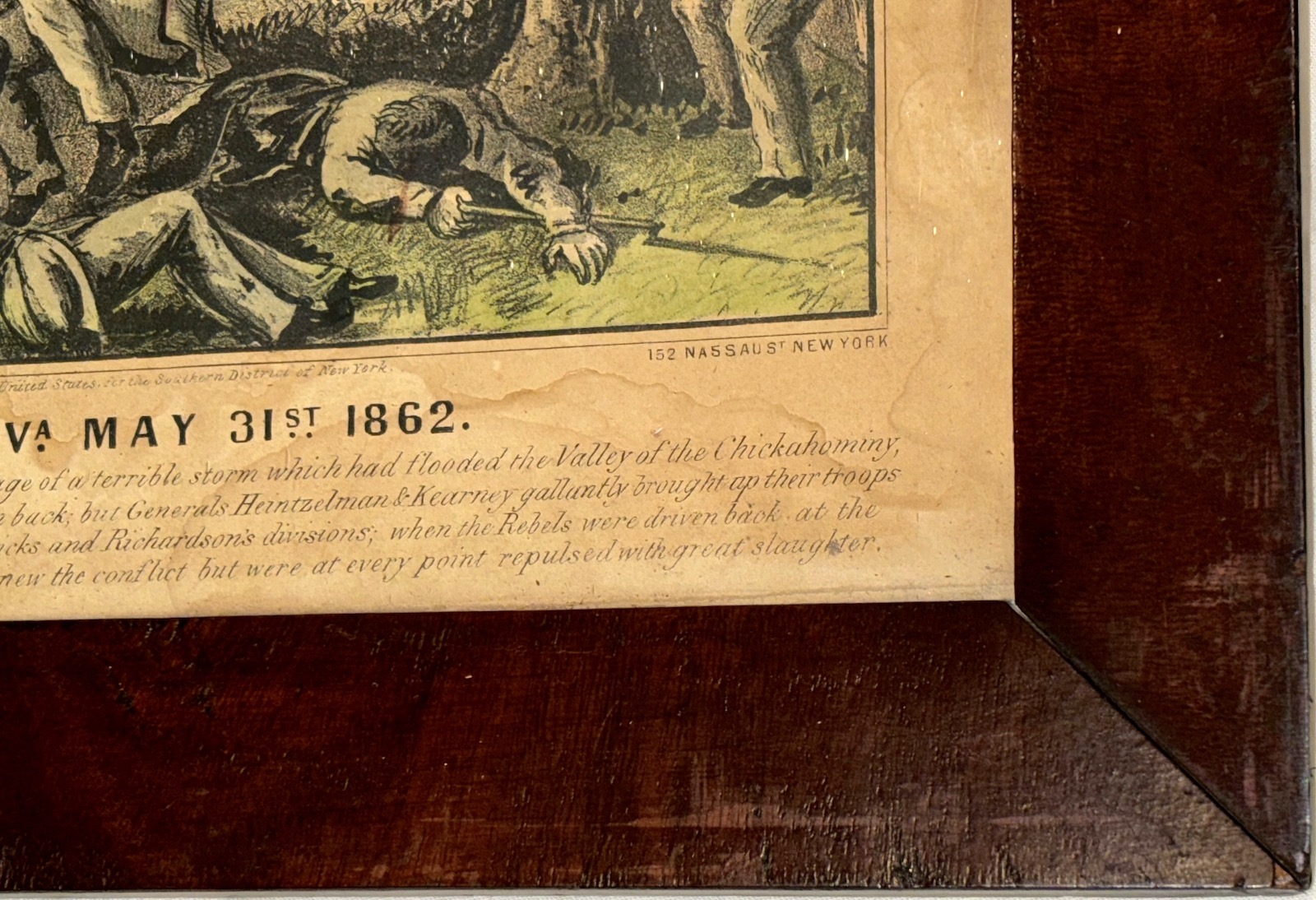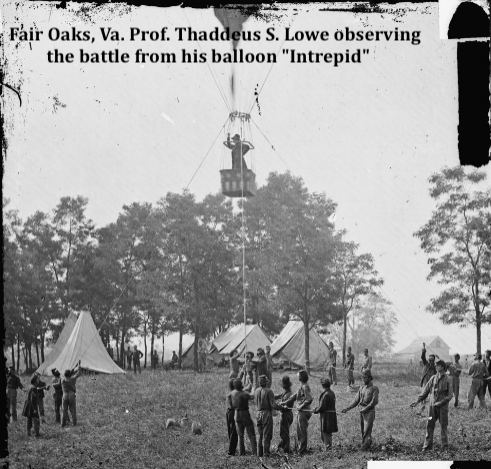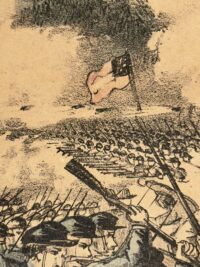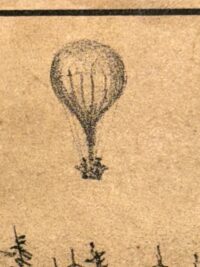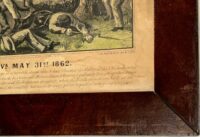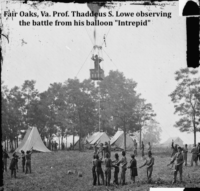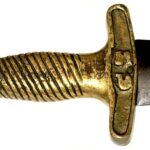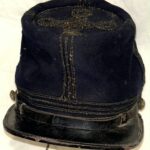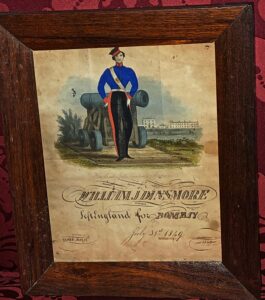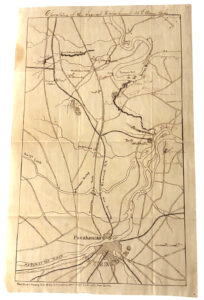Currier and Ives Civil War 1862 Colored Print of the Battle of Fair Oaks in Original Frame with Original Glass – Shows the Balloon of Professor Thaddeus Lowe
$450
Currier and Ives Civil War 1862 Colored Print of the Battle of Fair Oaks in Original Frame with Original Glass – Shows the Balloon of Professor Thaddeus Lowe – This rare Currier and Ives, hand-tinted print of the Battle of Fair Oaks, depicts the Intrepid, the observational balloon of Professor Thaddeus Lowe. During the battle, Lowe observed the battle from his balloon as it was aloft, during the fighting. This print, copyrighted by the famed company, Currier and Ives, was printed in 1862; it is housed in its original frame of poplar, with mahogany veneer. Covering the print is the original, period glass, exhibiting the granular bubbles of framing glass of the mid-19th century. The print is in overall good condition, with some age-related foxing, although the colors remain vibrant and the paper of the print is strong; a crease is evident in the middle of the print, but it does not detract from the visual appearance. We certainly have seen many of the Currier and Ives war period prints, but this is the first we have seen depicting Professor Lowe’s balloon aloft.
Battle of Seven Pines or Fair Oaks
| Battle of Seven Pines | |||||||
|
|||||||
| Belligerents | |||||||
| United States | Confederate States | ||||||
| Commanders and leaders | |||||||
| George B. McClellan Erasmus D. Keyes Silas Casey |
Joseph E. Johnston (WIA) G. W. Smith |
||||||
| Units involved | |||||||
| Army of the Potomac | Army of Northern Virginia | ||||||
| Strength | |||||||
| 34,000[1] | 39,000[1] | ||||||
| Casualties and losses | |||||||
| 5,431 total
(790 killed, |
6,134 total
(980 killed, |
||||||
The Battle of Seven Pines, also known as the Battle of Fair Oaks or Fair Oaks Station, took place on May 31 and June 1, 1862, in Henrico County, Virginia, nearby Sandston, as part of the Peninsula Campaign of the American Civil War. It was the culmination of an offensive up the Virginia Peninsula by Union Maj. Gen. George B. McClellan, in which the Army of the Potomac reached the outskirts of Richmond.
On May 31, Confederate General Joseph E. Johnston attempted to overwhelm two Federal corps that appeared isolated south of the Chickahominy River. The Confederate assaults, although not well coordinated, succeeded in driving back the IV Corps and inflicting heavy casualties. Reinforcements arrived, and both sides fed more and more troops into the action. Supported by the III Corps and Maj. Gen. John Sedgwick‘s division of Maj. Gen. Edwin V. Sumner‘s II Corps (which crossed the rain-swollen river on Grapevine Bridge), the Federal position was finally stabilized. Gen. Johnston was seriously wounded during the action, and command of the Confederate army devolved temporarily to Maj. Gen. G.W. Smith. On June 1, the Confederates renewed their assaults against the Federals, who had brought up more reinforcements, but made little headway. Both sides claimed victory.[3]
Although the battle was tactically inconclusive, it was the largest battle in the Eastern Theater up to that time (and second only to Shiloh in terms of casualties thus far, about 11,000 total). Gen. Johnston’s injury also had profound influence on the war: it led to the appointment of Robert E. Lee as Confederate commander. The more aggressive Lee initiated the Seven Days Battles, leading to a Union retreat in late June.[4] Seven Pines therefore marked the closest Union forces came to Richmond in this offensive.



